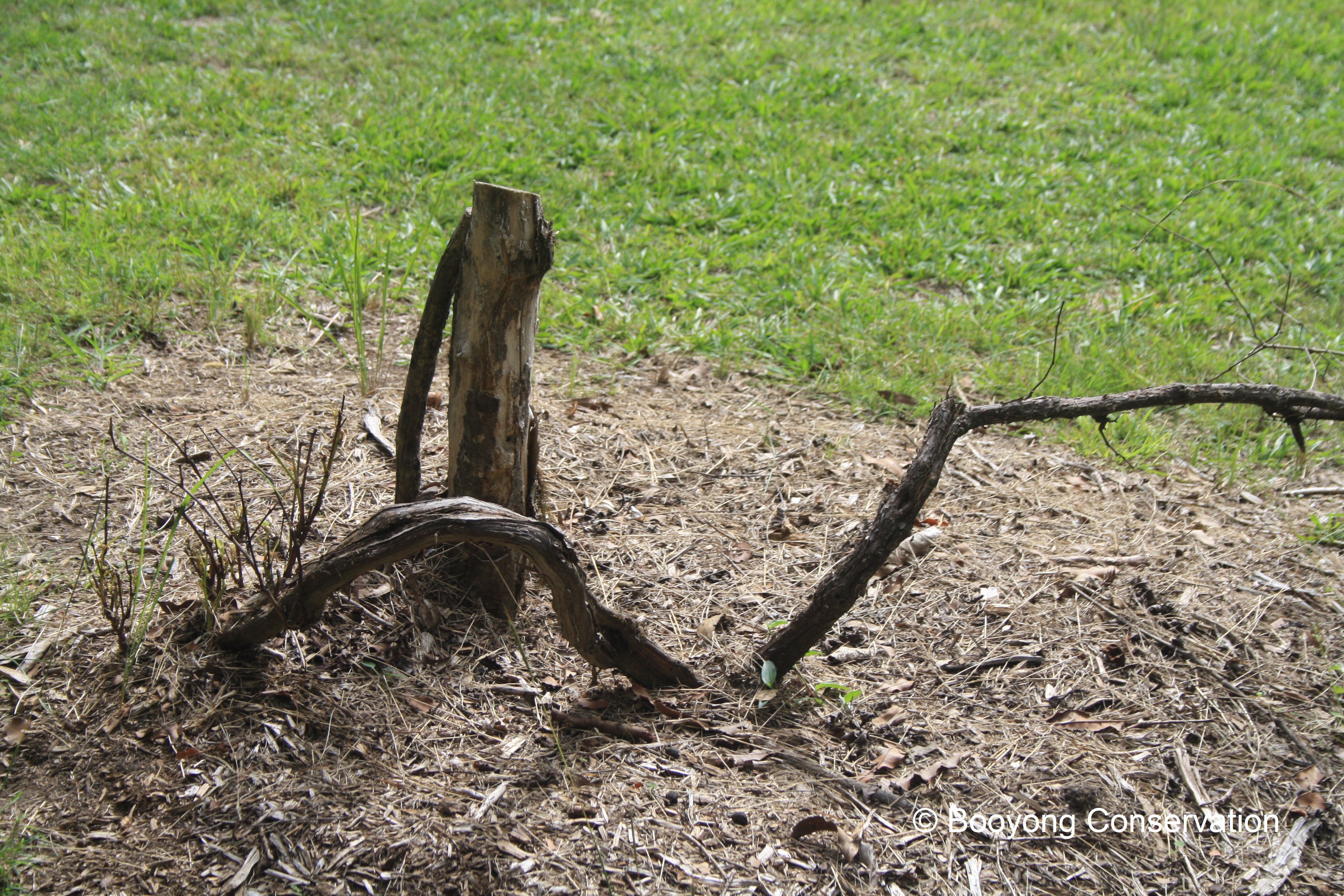I’m ashamed to admit that we’ve neglected the grape vine at Booyong. The young leaves are a favourite for the kangaroos and wallabies and despite putting in some posts to support the training wire, we haven’t quite gotten around to protecting it yet. Fortunately, it’s a perennial plant and keeps on giving. Better late than never!
Growing – Grape vines tolerate a range of soils and prefer a neutral to slightly acidic soil. The vine is positioned in full sun and once protected, with a wire placed between the poles, it will have a place to grow. They’re self-pollinating, drought resistant and bear generous crops of delicious fruit, so they’re worth the effort.
Care – Grapes grown in nutrient poor soils will need a bit of a supplementary feed, so we will be sure to add compost and organic matter. In early spring we will also apply a nitrogen fertilizer to help it on its way.
Grapes need to be watered at least once a week when they are actively growing in the spring and summer. This watering should be continued until the berries begin to colour and is not needed thereafter.
Pruning – Pruning grapes can be a bit daunting, but it must be done each year. Pruning removes 90-95% of the previous year’s growth. It keeps the vines in balance and aids in controlling the crop and ripening the fruit. Without pruning the grapevine becomes overgrown; they overbear, and the berries don’t ripen properly.
Once our plant is established, during each dormant season we’ll keep a few stems that grew last year, train them on the wires and prune everything else off. Buds will appear on the remaining growth and produce several shoots that grow leaves and flowers.
Companion Planting – According to Gardening know how, excellent companions for grapes include: hyssop, oregano, basil, beans, blackberries, clover, geraniums and peas. In the case of hyssop, bees love the flowers while the rest of the plant deters pests and improves the grape’s flavour. Geraniums also repel pests, such as leafhoppers. Blackberries provide shelter for beneficial parasitic wasps, which also kill leafhopper eggs. Other plants make good companions for grapevines due to their pest repellent qualities. These include aromatic plants such as garlic, chives, rosemary, tansy, and mint.
Pests and Diseases – Grapevine trunk diseases such as eutypa dieback and botryosphaeria dieback (bot canker) can cause significant yield reduction and threaten the sustainability of vineyards. Powdery mildew, downy mildew and botrytis bunch rot are the top three disease concerns in Australian vineyards. More information can be found at Wine Australia.
Harvest – Next year we will look forward to a crop of fruit in late summer and autumn.
Propagation – Grapes can be propagated in several ways, but the most common method is through dormant cuttings.
Health Benefits – Grapes are a good source of vitamins C (needed for the growth and repair of tissues in the body) and K (important for helping your blood to clot) and contain some vitamin A. They also contain minerals such as potassium (which helps to regulate blood pressure) and dietary fibre.
Eating – Grape vines provide fresh grapes, which can be used for dried fruits, oils, juice and of course wine – well worth the effort I’m sure! We’re not sure of the variety we have but will certainly let you know.
